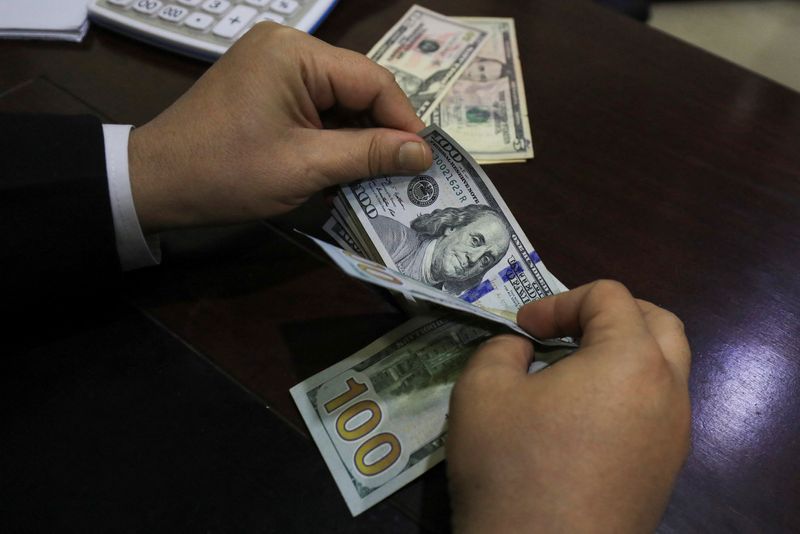By Karen Brettell
NEW YORK (Reuters) - The yen was little changed on Monday, giving up earlier gains after Japan’s top currency diplomat warned against speculators trying to weaken the currency, while the dollar index fell from a one-month high reached on Friday.
Masato Kanda, Japan's vice finance minister for international affairs, said that weakness in the Japanese currency did not reflect fundamentals, in the latest warning about the currency's "big slide" against the dollar.
“He’s clearly putting traders on alert for signs of intervention,” Karl Schamotta, chief market strategist at Corpay in Toronto, said.
The yen was unable to hold gains for long, however.
The dollar was last up 0.03% on the day at 151.47 yen, just below a four-month high of 151.86 reached on Friday. The Japanese currency is trading near its lowest levels in three decades, having reached 151.94 per dollar in October 2022, which was then its weakest level in 32 years.
Traders are watching the level around 152 for signs of possible intervention, although Schamotta noted that the government may not step in unless volatility picks up, adding that this factor may be more important than the exchange rate.
“Implied volatility does continue to grind lower across most major currencies so this is a supportive environment for the carry trade - we should continue to see speculators borrow in yen and other low yielders, and invest in the emerging market high yielders,” he said, and “that could continue to put downward pressure on the yen.”
The Japanese currency has dropped despite the Bank of Japan hiking interest rates out of negative territory last week.
China's yuan gained in the offshore market to 7.2525, propped up by suspected selling of dollars by state-owned banks and a strong official guidance set by the country's central bank.
It earlier fell to its weakest levels in four months at 7.2810. The Chinese currency has been pressured by growing market expectations of further monetary easing to prop up the world's second-largest economy.
The dollar index fell 0.19% at 104.23, after hitting 104.49 on Friday, the highest since Feb. 16.
Federal Reserve Chair Jerome Powell said last week that the U.S. central bank remains on track for rate cuts this year, despite stickier than expected inflation in January and February.
Some Fed officials including Atlanta Fed President Raphael Bostic, however, have expressed concern about persistent inflation and stronger-than-anticipated economic data. Bostic said on Friday that he expects just a single quarter-point interest rate cut this year instead of the two he had projected.
Fed officials said on Monday they had faith that U.S. inflation will ease, but acknowledged an increased sense of caution around the debate.
The personal consumption expenditure (PCE) price index for February due on Friday is the next major release for further clues on Fed policy. The data will come as other markets including stocks and bonds are closed for the Good Friday holiday, which may reduce foreign exchange trading volumes.
Data on Monday showed that sales of new U.S. single-family homes unexpectedly fell in February after mortgage rates increased during the month.
The euro rose 0.27% to $1.0834. Sterling strengthened 0.29% to $1.2635.
Bets for a June rate cut by the European Central Bank and the Bank of England (BoE) have risen substantially after the Swiss National Bank became the first major central bank to lower borrowing costs last week and BoE Governor Andrew Bailey told the Financial Times that rate cuts "were in play" this year.

Elsewhere, the Australian dollar gained 0.37% versus the U.S. dollar to $0.654.
Bitcoin rose more than 6% to $70,987.49, the highest since March 15. It is holding below a record high of $73,803.25 on March 14.